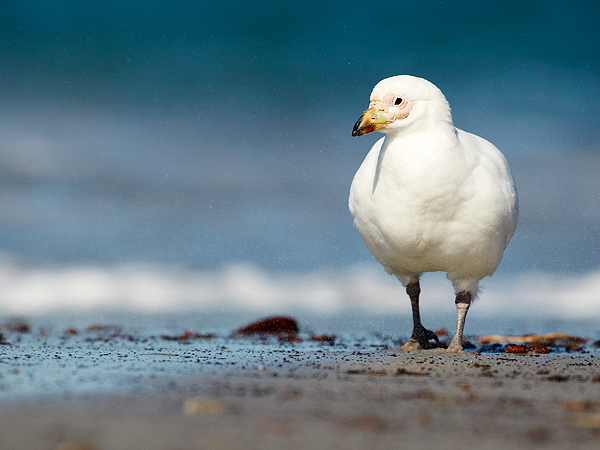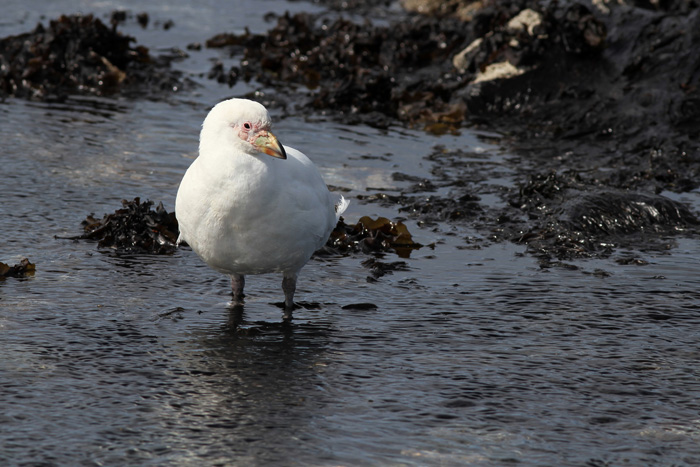
Chionis alba
TAXONOMY
Vaginalis alba Gmelin, 1979, New Zealand. Monotypic.
OTHER COMMON NAMES
English: Greater sheathbill, snowy sheathbill, wattled sheathbill;
French: Chionis blanc; German: WeiЯgesicht-Scheidenschnabel;
Spanish: Picovaina de Malvinas.
PHYSICAL CHARACTERISTICS
13.4–16.1 in (34–41 cm); 1.2–1.7 lb (460–780 g); wingspan
29.5–31.5 in (75–80 cm). Similar to other sheathbills except
that the bill sheath is greenish and caruncles are pink.
DISTRIBUTION
Breeder and year-round resident on Antarctic Peninsula and
subantarctic islands of the Atlantic Ocean including South
Shetland Islands, South Orkney Islands, and South Georgia
Island. Occurrence not confirmed on South Sandwich Islands
but likely. Migrants observed wintering in southern regions
of South America but little information exists on their exact
origin.
HABITAT
Rocky and sandy
coastal plains and intertidal
zones; sites
with seabird colonies
and seal haul-outs.
BEHAVIOR
Pairs territorial during
breeding season;
occur in groups on
wintering grounds;
most birds migratory.
FEEDING
ECOLOGY AND
DIET
Omnivorous. Kleptoparasitize
seabirds
and eat eggs, chicks,
and excrement. Also feed on algae and invertebrates of intertidal
zone.
REPRODUCTIVE BIOLOGY
Monogamous with long-term pair bonds. One to three eggs
laid from late November to December. Incubation period
28–32 days. Chicks are semi-precocial and nidiculous. Fledging
occurs 50–60 days following hatching.
CONSERVATION STATUS
Not threatened. Population estimated at 10,000 pairs.
SIGNIFICANCE TO HUMANS
Interaction with humans limited to research stations where
pale-faced sheathbills exploit discarded food and excrement.
Other popular Animals
Photo Gallery of - Pale-faced sheathbill




 Animalia Life
Animalia Life